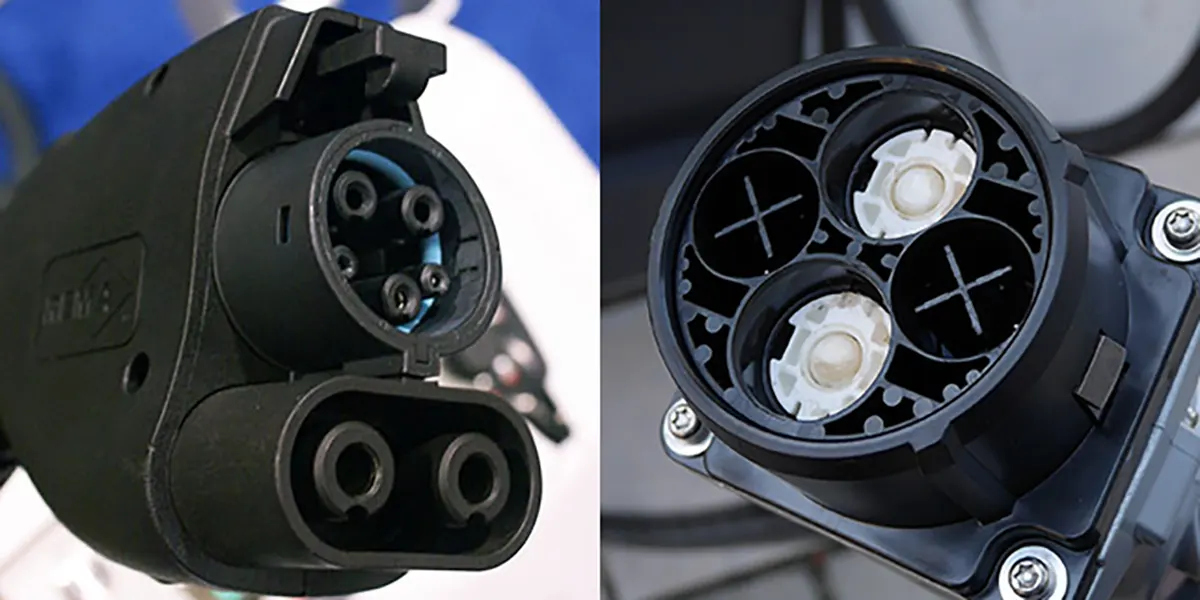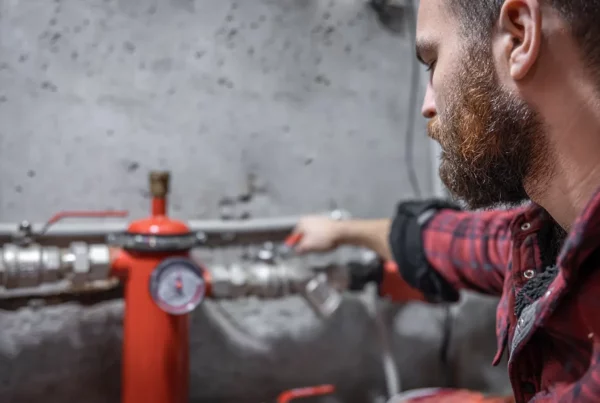
What Is CHAdeMO?
CHAdeMO (CHArge de MOve) is an electric vehicle DC fast charging system. The charging process employs a CHAdeMO-specific connector incompatible with other charging systems. The charging station charges the vehicle’s battery with a direct high-voltage current, allowing a much faster charging time than traditional AC charging. Charging stations are typically rated at 50kW or higher, allowing for a full charge in less than an hour.
Installing a CHAdeMO charging station requires an electrician to understand the electrical requirements, which typically include a high-voltage direct current supply and a dedicated transformer. The station also provides communication and control systems to manage the charging process and ensure the safety of the user and equipment.
It’s also important to understand CHAdeMO’s electrical and mechanical standards, which cover the connector, communication protocols, and safety requirements. Electricians must be familiar with the safety equipment and procedures required to install and maintain a CHAdeMO charging station and the safety protocols for working with high voltage direct current.
What Is CSS?
CCS (Combined Charging System) is an electric vehicle charging system that combines AC and DC charging into a single connector. This provides greater charging flexibility because the vehicle can be charged using either alternating current (AC) or direct current (DC), depending on the charging station’s capabilities and the vehicle’s needs. CCS charging stations typically employ a DC fast charging system, allowing for much quicker charging times than traditional AC charging. The charging stations are usually rated at 50kW or higher, allowing for a full charge in less than 30 minutes.
Electricians should know the electrical requirements for installing a CCS charging station, which typically involves a high-voltage direct current supply and a dedicated transformer. The station also includes communication and control systems to manage the charging process and ensure the safety of the user and equipment. It’s also important to understand CCS’s electrical and mechanical standards, which cover the connector, communication protocols, and safety requirements. Plus, electricians must be familiar with the safety protocols for working with high voltage direct current, as well as the safety equipment and procedures required to install and maintain a CCS charging station.
Furthermore, CCS stations must be integrated with the grid and billing systems to ensure proper energy management and proper billing of the user.
The primary distinction between CHAdeMO and CCS is their connectors and charging methods. CHAdeMO employs a one-of-a-kind connector that is incompatible with other charging systems and is typically used for fast DC charging, which involves charging the vehicle’s battery with a direct high-voltage current. Compared to traditional AC charging, this method allows for much faster charging. CHAdeMO charging stations are usually rated at 50kW or higher, allowing for a full charge in less than an hour.
On the other hand, CCS employs a hybrid connector that supports AC and DC charging. This provides greater charging flexibility because the vehicle can be charged using either alternating current (AC) or direct current (DC), depending on the charging station’s capabilities and the vehicle’s needs. CCS charging stations typically employ a DC fast charging system, allowing for much quicker charging times than traditional AC charging. CCS charging stations are usually rated at 50kW or higher, allowing for a full charge in less than 30 minutes.
Both charging systems require a high-voltage direct current supply and a dedicated transformer, as well as communication and control systems to manage the charging process and ensure the user’s and the equipment’s safety. Electricians must be familiar with both systems’ electrical and mechanical standards, safety requirements, and protocols. On the other hand, CCS charging stations must be integrated with the grid and the billing system to ensure proper energy management and proper billing of the user.
Differences
Both CHAdeMO and CCS are types of electric vehicle charging connectors and protocols, but they have some key differences:
- CHAdeMO is most commonly used in Japan and other Asian countries, whereas CCS is becoming more popular in Europe and North America.
- CHAdeMO charging stations can charge an electric vehicle to 80% in less than an hour, while CCS charging stations can charge an electric vehicle to 80% in less than 30 minutes.
- Many electric vehicles, including the Nissan Leaf and Mitsubishi i-MiEV, use CHAdeMO. Many major automakers, including BMW, Volkswagen, and General Motors, use CCS.
- CHAdeMO uses a separate connector, whereas CCS uses a combined connector that allows AC and DC charging.
- CHAdeMO is supported by several Japanese automakers, including Nissan, Mitsubishi, Subaru, and Toyota, while BMW, Volkswagen, and General Motors support CCS.
Advantages of CHAdeMO
The CHAdeMO electric vehicle charging system has several advantages:
- CHAdeMO charging stations are widely available in Japan and other parts of Asia, allowing electric vehicle owners to charge their vehicles while on the go.
- CHAdeMO charging stations can charge an electric vehicle to 80% in less than an hour, which is significantly faster than most other charging systems.
- Compatible with many vehicles: Many electric vehicles, including the Nissan Leaf and Mitsubishi i-MiEV, use CHAdeMO.
- CHAdeMO has been used for over a decade and has proven to be a dependable and efficient charging system.
- Unlike other fast-charging systems, CHAdeMO charging stations are less expensive.
- CHAdeMO charging is less expensive than CCS charging.
Disadvantages of CHAdeMO
While CHAdeMO has several advantages, it also has some disadvantages as an electric vehicle charging system:
- CHAdeMO charging stations are primarily found in Japan and other Asian countries, limiting the system’s utility for electric vehicle owners in other parts of the world.
- CHAdeMO is only used by a few Japanese automakers, including Nissan, Mitsubishi, Subaru, and Toyota, limiting the number of electric vehicle models that can use the system.
- CHAdeMO is less widespread outside of Asia, so fewer charging stations are available elsewhere.
- CHAdeMO is only for DC fast charging, limiting the system’s ability to charge vehicles using AC charging.
- Owners of vehicles lacking a CHAdeMO charging port must purchase a separate adapter to use CHAdeMO charging stations, which can be costly.
- Because Japanese automakers primarily support CHAdeMO, it may require more assistance than other charging systems such as CCS.
Advantages of CCS
The CCS (Combined Charging System) electric vehicle charging system has several advantages:
- Because CCS is used by many major automakers, including BMW, Volkswagen, and General Motors, it is compatible with many electric vehicle models.
- CCS charging stations can charge an electric vehicle to 80% in less than 30 minutes, which is significantly faster than most other charging systems.
- CCS integrates AC and DC charging functions into a single connector, providing more charging options.
- CCS is becoming more common in Europe and North America and is regarded as one of the primary standards for fast electric vehicle charging.
- Unlike other fast-charging systems, a CCS charging station is less expensive.
- CCS allows for bidirectional charging, which means that an EV can also supply electricity to the grid. This is known as Vehicle-to-Grid (V2G)
Disadvantages of CCS
While CCS has several advantages, it also has some drawbacks as an electric vehicle charging system:
- CCS charging stations are mostly found in Europe and North America, limiting the system’s utility for owners of electric vehicles in other parts of the world.
- CCS is a newer system with fewer charging stations than older systems like CHAdeMO. CCS is a newer system that may not be compatible with older electric vehicle models.
- Owners of vehicles lacking CCS charging ports must purchase a separate adapter to use CCS charging stations, which can be costly.
- CCS charging stations have a charging power of around 150KW, which is less than that of other charging systems such as Tesla Superchargers.
- CCS charging stations require a more complex infrastructure than other systems, making installation more expensive.









